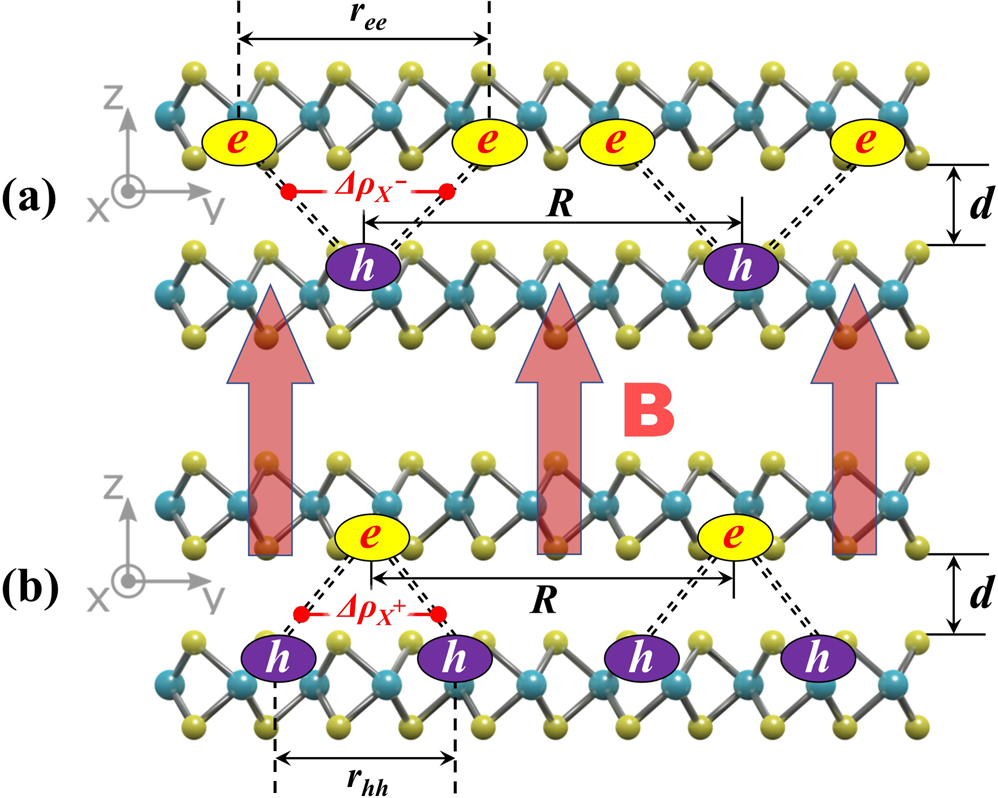Magnetic-field-induced Wigner crystallization of charged interlayer excitons in van der Waals heterostructures
Published in Materials

Ever since its inception, coherent excited states of semiconductors have been the focus of semiconductor materials research to evolve into a vibrant field of low-dimensional solid-state physics. The field is gaining new momentum these days due to emerging transdimensional semiconductors such as van der Waals bound layers of transition metal dichalcogenides (TMDs) of controlled thickness. Here, we develop the theory of magnetic-field-induced Wigner crystallization for charged interlayer excitons (CIE) discovered recently in TMD heterobilayers. We derive the ratio of the potential interaction energy to the kinetic energy for the many-particle CIE system in the perpendicular magnetostatic field of an arbitrary strength and predict the crystallization effect in the strong field regime. We show that magnetic-field-induced Wigner crystallization and melting of CIEs can be observed in magneto-photoluminescence experiments with TMD bilayers of systematically varied electron-hole doping concentrations. Our results advance the capabilities of this new generation of transdimensional quantum materials.
Follow the Topic
-
Communications Physics

An open access journal from Nature Portfolio publishing high-quality research, reviews and commentary in all areas of the physical sciences.
Related Collections
With Collections, you can get published faster and increase your visibility.
Higher-order interaction networks 2024
Publishing Model: Open Access
Deadline: Feb 28, 2026
Non-Markovian quantum dynamics in physical systems: description and control
Publishing Model: Open Access
Deadline: Dec 31, 2025



Please sign in or register for FREE
If you are a registered user on Research Communities by Springer Nature, please sign in